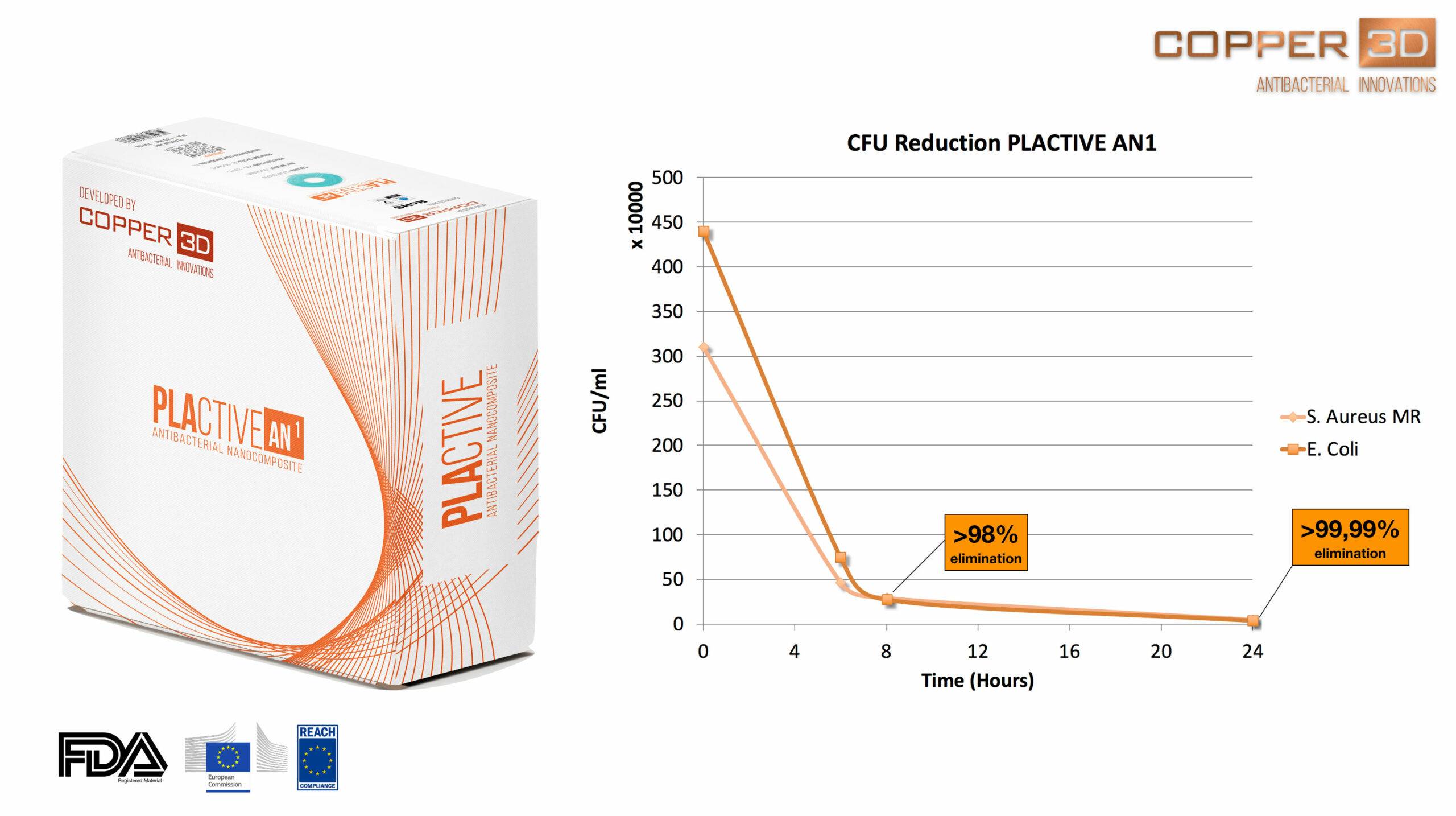NASA Nebraska Space Grant office provided funding to examine the development, validation, and mechanically characterization of antimicrobial 3D printed medical devices for astronauts. The objective is to test the antimicrobial properties of Copper3D’s PLACTIVE filament material on the International Space Station.
“For us all this has been an exciting journey, full of learning and constantly discovering new uses for our material,” said Andrés Acuña, CEO of Copper3D. “This new research collaboration with NASA will help us to validate this concept in very extreme conditions, which also leads us to think that this new type of materials can also be very useful to solve the great challenges and problems that we face here on earth in several industries […] This is just beginning and we know that it will be a huge revolution in the way we understand manufacturing and the nature of materials”.
3D printing long term
NASA has great challenges in the coming years for the long-term space missions that will put astronauts on Mars in the 2030’s. Some of these challenges are related to the limited space of the shuttle and the International Space Station (ISS), the need to produce objects on demand and optimize the use of materials only under strictly necessary situations.
Adding to these challenges, other issues are being studied such as the Immune System Dysregulation that occurs in long-term space missions and leaves astronauts very prone to get infections of all kinds. Recent evidence from spaceflight experiments also suggests alterations in microbial characteristics, including virulence, in organisms grown during flight. In combination with potential host susceptibility due to dysfunction in the immune system, infectious disease risk may be significantly greater in the spaceflight environment than in normal workplace settings.
Antimicrobial 3D printing takes off
All these factors and challenges undoubtedly lead us to a very powerful concept that is already being studied by NASA. Antimicrobial 3D Printing. “Basically, our idea is to introduce to the 3D printing industry the concept of Active Materials”, Daniel Martinez, Director of Innovation and CMO of Copper3D explained. “These are materials that are no longer inert and only support structures but now they are active components that play a specific role and adds great value to the final 3D printed object, in this case the attribute is that these objects are completely antimicrobial.”
This new technology, based on a patented additive with copper nanostructures and other carriers/controller elements, can have a very positive impact on the new challenges faced by NASA facing the long-term space missions and this specific problem with the Immune System Dysregulation. For example this new generation of 3D printed objects can have powerful impacts on the early treatment of complex wounds, on avoiding infections of all kinds or in the development a whole new generation active/antimicrobial medical devices.
Dr. Claudio Soto, Medical Director of Copper3D, says about the Immune System Dysregulation: “It is an entity that is recently being studied and that could put in risk the long-term space missions, for example those that are expected to be made in the future on Mars. What is known so far is that there could be a sum of factors behind this problem such as radiation, multi-resistant microbes, stress, microgravity, altered sleep cycles and isolation. To these factors we can add others, for example studies have demonstrated that the methicillin resistant Staphylococcus aureus strain shows enhanced antibiotic resistance in microgravity-analogue conditions suggesting potential alterations in antibiotic efficacy during spaceflights. Thus, there is a critical need for preventive countermeasures to mitigate microbial risks during space flight missions”.


